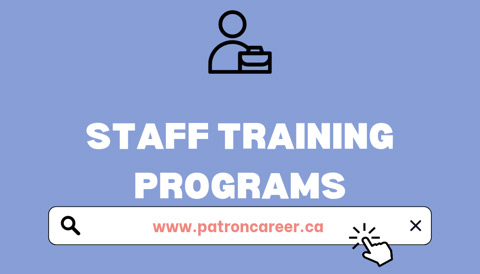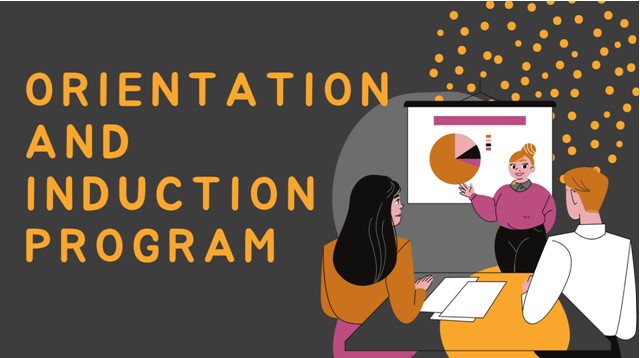
Employee Training Programs
08 November, 2022
Patron Career Staffing firmly believes in adopting a tailored approach to meet temporary and permanent recruitment needs. We safeguard the interest of our clients by finding such workers who are knowledgeable and reliable.
About UsNeed help? Make a Call
32 Dundas Street East Unit A, L5A1W2

Starting a new job is exciting and agitating for new recruits. They have secured the job by the sweat of their brows and are curious to familiarize themselves with the workplace environment. Now, this time frame between accepting and beginning a job is crucial for new job opportunists and employers as it sets the tone for employee orientation and induction training. This eventually smoothens their path to success in the new workplace.
Ideally, all organizations are known to reflect on induction or orientation programs in the first few days, but it may last up to weeks or even months. It is designed to help employees settle quickly and accommodate them to their position in the company. These corporate induction sessions should be well-sought after in advance with proper planning as per the size, nature, and aims of the organization.
Orientation or induction, whatever you want to call them, is a part of the staffing process, one that organizations cannot afford to overlook. It determines the overall prospective productivity of the new employees. It introduces a new hire to the company’s policies, and goals and gives them a big picture of the team and office they’ll work in. This process is all about employee assimilation and socialization to align them with the company’s corporate culture and their co-workers. How well you introduce new employees to their job and work environment institutes a sense of interconnection and satisfaction towards the company.
Employee orientation/induction programs must be structured in a coherent, systematic manner so that the new employees can learn as much as possible about the job role and the organizational demands. It must be tailored while keeping in mind the heterogeneity of employees. It must provide basic information, and train employees about the responsibilities of the position and the company. It must clarify any questions they might have about HR, job benefits, and the payroll system.
New recruits are often swept over with anxiety about adjusting to the new job surroundings. It could be stepping up to a new job designation in a different department, or moving to a new place. Whatever the reason is, all employees must feel supported by getting the same opportunities to thrive within the organization.
The superior has to be his "Buddy" and introduce him to various systems and rules, all in one go. Pairing the new recruit with a qualified mentor can accelerate the onboarding process. The mentor must be instructive to familiarize new employees with the building and team, so he knows where he is working, their work cubicle, whom to report to, the location of the medical room, canteen, restroom, and so on. You don’t want them loitering around aimlessly in search of tea/coffee, but rather direct their productivity onto the work goals.
• MINIMIZE EMPLOYEE TURNOVER
Orientation and induction are requisite phases linked to a new hire’s journey in the corporate world. It protects the lifespan of the organization because it serves as an important element in boosting employee productivity and retention. When employees feel valued, it even reduces the chances of absenteeism.
• COST-EFFECTIVE PROGRAM
Hiring top talent is not an easy undertaking to perform. It bears pressure and expense on the organization. A much bigger concern is extracting the most out of these employees so both the company and the employee can mutually benefit from it. No wonder why organizations choose to incorporate a solid cultural and leadership-driven orientation program.
A precise, well-developed orientation program lessens the chances of future mistakes by employees. When mentors instruct new recruits about what is expected from them, along with the ways to achieve it, and how they are to behave in the organizational set-up by conforming with the required norms and ethics of the company, the employee automatically assumes his role much more quickly. This leads to reduced costs associated with learning the job.
• EMPLOYEE MOTIVATION
Motivated employees at the workplace are a comprehensive result of the fulfillment of employee needs. The induction process builds confidence in new employees and increases their engagement in the overall work of the company. It assists in busting their anxiety about fresh job hires. It helps them acclimate to a new working environment by familiarizing them with the ‘next steps’ in onboarding. There is no guesswork related to his/her tasks, duties, and company requirements.
1. Presentation of overall introduction about the company's mission and vision statements, its history, achievements, workplace norms, key executives, purpose, products, and services, annual reports, etc.
2. Job demands, roles, and key result areas; organization expectations.
3. Show them around the workspace and tools available (computer software usage, office supplies, coffee machines)
4. Functional training, goal setting, and performance reviews to settle in new employees
5. Informational hierarchy and feedback workflow to retain a pool of new, proficient employees.
6. On-the-job and off-the-job training methods.
7. Stakeholder engagement, social benefits, and recreational facility.
8. Offering them time to build social connections, time for casual chats with new employees.
9. Hand them the employee handbook and any required documents, and insurance policies.
10. Grievance mechanisms, promotions, transfers, work methods, etc.
11. Organize workshops, and cultural programs and host dinners.
12. Do follow-up on completion of induction, to ensure employee satisfaction.
Orientation and induction are important steps of staffing. Organizations should formulate an orientation program that is tailored to new recruits’ expectations. All their questions must be dealt with through presentations, official meetings, and necessary training. Build a good mix of activities. Structure it as a two-way street, and allow new hires to inquire and ask pertinent questions. Remember, it should be designed in a fun, innovative way in the form of ice-breaking sessions, quizzes, informal interactions, and a lot more stress-busting activities to aid them in adaptation to newer surroundings.
